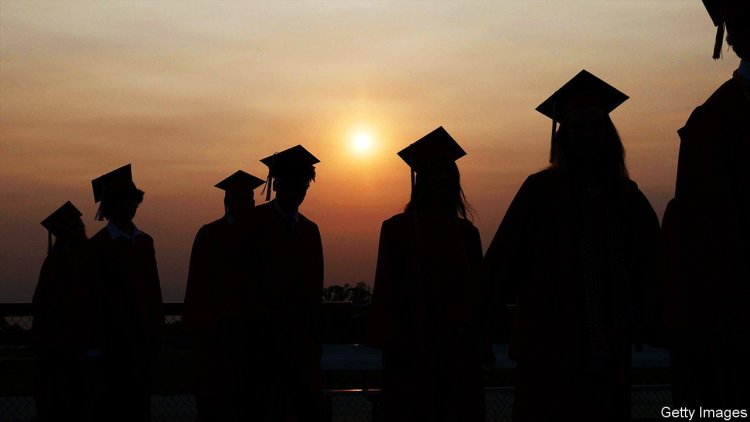The Supreme Court blocks Joe Biden’s student-debt-relief plan
image: Getty ImagesIN ITS LAST decision of the 2022-23 term, the Supreme Court on June 30th scuttled President Joe Biden’s plan to cancel some $430bn in federal student debt. About 20m borrowers who stood to see their debts erased and another 23m whose median debt would have shrunk from $29,400 to $13,600 are now, with the decision in Biden v Nebraska, facing payments (set to resume in October) on the full balance of their student loans. It has been a while since student borrowers have had to make their monthly payments. Donald Trump put them on pause in March 2020 and extended the forbearance twice. Once Mr Biden took office, he offered extensions until the summer of 2022, prolonging an expensive and regressive policy. When the extensions ran out he said payments would resume but with the sweetener of a new programme eliminating up to $10,000 of debt for borrowers making under $125,000 a year and up to $20,000 for those who had received Pell grants (aid for low-income students) during


IN ITS LAST decision of the 2022-23 term, the Supreme Court on June 30th scuttled President Joe Biden’s plan to cancel some $430bn in federal student debt. About 20m borrowers who stood to see their debts erased and another 23m whose median debt would have shrunk from $29,400 to $13,600 are now, with the decision in Biden v Nebraska, facing payments (set to resume in October) on the full balance of their student loans.
It has been a while since student borrowers have had to make their monthly payments. Donald Trump put them on pause in March 2020 and extended the forbearance twice. Once Mr Biden took office, he offered extensions until the summer of 2022, prolonging an expensive and regressive policy. When the extensions ran out he said payments would resume but with the sweetener of a new programme eliminating up to $10,000 of debt for borrowers making under $125,000 a year and up to $20,000 for those who had received Pell grants (aid for low-income students) during their college days.
Lawsuits immediately sprang up, and Mr Biden’s programme was put on pause. Mr Biden claimed the HEROES Act, a 2003 law passed during the Iraq war, allowed the secretary of education to “waive or modify” rules governing student loans when a “national emergency”—in this case, the pandemic—might put borrowers in a worse position financially.
Six justices rejected that idea. Chief Justice John Roberts was clear as to whether the HEROES Act grants Mr Biden the authority to cancel debt: “It does not.” The law might allow the secretary to alter financial-assistance programmes but it does not permit him to “rewrite that statute from the ground up”.
The scope of the plan rankled the majority. Rather than soften loans around the edges, Mr Biden’s programme provided that “every borrower within the specified income cap automatically qualifies for debt cancellation, no matter their circumstances”. Up to “98.5% of all borrowers” stood to profit. “From a few narrowly delineated situations specified by Congress, the Secretary has expanded forgiveness to nearly every borrower in the country.” Reprising a joke he told in the oral argument, Chief Justice Roberts wrote that the plan “has ‘modified’ the cited provisions only in the same sense that the French Revolution ‘modified’ the status of the French nobility.” Rather than being a modest move, “it has abolished [the regulations] and supplanted them with a new regime entirely.”
That dramatic move by the executive branch does not jibe with what Congress meant to permit with the HEROES Act, the opinion continues, and it does “not remotely resemble how it has been used on prior occasions”. Citing a fairly new idea called the “major questions doctrine”, Chief Justice Roberts concluded that the “economic and political significance” of Mr Biden’s action “is staggering by any measure” and clearly exceeds what Congress intended when it enacted the law two decades ago.
Justice Elena Kagan wrote a furious dissent, joined by Justices Ketanji Brown Jackson and Sonia Sotomayor, telling the majority that it, not Mr Biden, had grabbed extravagant authority and compromised the separation of powers. “In every respect”, she began, “the court today exceeds its proper, limited role in our nation’s governance.” Mr Biden’s debt-relief plan “may have been a good idea, or it may have been a bad idea”, but in any case, “it was what Congress said” the federal government could do. All but accusing the majority of cancelling the plan on policy grounds (not proper legal reasoning), Justice Kagan contended that the court had put “its own heavyweight thumb on the scales”.
An even more adamant dimension of the dissent concerned the technical question of standing, the legal right to sue. In a companion case decided on June 30th (Department of Education v Brown), the court unanimously rejected standing for individual borrowers who claimed to have suffered an injury from the debt relief. But for the dissenters in Biden v Nebraska, the Republican states were just as bereft of eligibility to sue. “We do not allow plaintiffs to bring suit just because they oppose a policy,” Justice Kagan wrote. But the red states “are classic ideological plaintiffs,” she argued, and in giving those states a forum “the court forgets its proper role”.
This strong language drew an unusual coda from Chief Justice Roberts. “It has become a disturbing feature of some recent opinions to criticise the decisions with which they disagree as going beyond the proper role of the judiciary,” he wrote. While “reasonable minds may disagree with our analysis”, disparaging the court is to cross a red line. Justices should be wary of misleading the public with internecine attacks that could prove “harmful to this institution and our country”. In response, Justice Kagan disavowed that anything “personal” animated her claim that the majority “departs from the demands of judicial restraint”. Throughout the court’s history, she wrote, justices have “raised the alarm when the court has overreached” and have an obligation to do so.
Whoever is right about which branch is guiltier of overreaching, it seems the question of how to deal with student debt is still open. Soon after the decision came down, Alexandria Ocasio-Cortez, a Democratic member of the House, tweeted that Mr Biden has another statutory hook for relieving debt: the Higher Education Act. But Chief Justice Roberts may have anticipated this response. That law “authorises the secretary to cancel or reduce loans, but only in certain limited circumstances and to a particular extent”, the decision reads. For his part, Mr Biden criticised the decision on Twitter, calling it “unthinkable” and announcing hours after its release that he would indeed tap the Higher Education Act to relieve the burden on some borrowers. The workaround will take some time to implement, he said, and noted that his education secretary had got the ball rolling earlier in the afternoon. “This fight isn’t over,” he pledged. ■
What's Your Reaction?

















